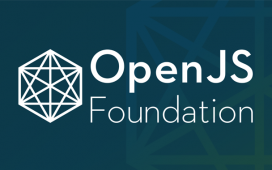
As hundreds of millions of dollars flowed into the industry in the space of five days this month, we are obliged to take notice of a maturing video surveillance market that is now starting to take a foothold in Western markets.
(Image courtesy ismagilov/bigstockphoto.com)
Editor’s note: This article originally appeared on Memoori.com and has been reprinted here with permission.
Our smart buildings and smart cities are now being designed to sense and understand the world around them much like humans do. Networks of sensors hear via microphones in voice control, smell via air quality or gas monitors and feel via temperature, humidity, or pressure sensors. However, like in humans, sight is generally accepted as the ultimate sensing ability. In recent years, we have seen a maturing of the video surveillance market led by advances in camera hardware and the emergence of intelligent cloud computing that is able to process the huge volumes of data that video surveillance produces. This month, record levels of funding are setting the stage for our buildings and cities to become visually smart.
“In 2019, artificial intelligence (AI) technology applied to video surveillance has convinced the market that by 2020 it will become mainstream over the next 10 years,” states our report – The Physical Security Business 2020 to 2025. “There is a critical need to make full use of the massive amounts of data being generated by video surveillance cameras and AI-based solutions are the only practical answer. Modern chip architecture with AI software can comb through vast volumes of data and boost security and safety. Granted, there is a lot of development in this field that we are yet to see, but the path towards AI seems quite clear.”
AI adds a brain to our smart technology ecosystems, which allows these systems to understand the wide range of sensory inputs and process massive amounts of data being provided by sensor hardware. This is especially important for computer vision that feeds from numerous streams of video surveillance footage and creates far more data than would be feasible for human teams to monitor. Like the human brain, AI video analytics can count people, identify individuals, and recognize activities in order to drive security, efficiency, and behavioral prediction applications, and even help us fight crime.
Earlier this month, Atlanta-based startup Flock Safety announced a $150 million series D funding, one of the largest funding rounds in video surveillance history, led by Andreesen Horowitz. Flock’s unique offering provides the ability to automate monitoring across multiple networks, such as federal agencies, local police departments, and other criminal watchlists, to reduce crime while protecting privacy and mitigating bias. The proprietary technology has demonstrated its ability to reduce crime by over 70%, especially effective in recovering illegal weapons, stopping armed robberies, solving homicides, and rescuing kidnapping victims.
“Four years ago, we started Flock Safety with a simple mission, to eliminate crime. We knew it would take neighborhoods and businesses working together with law enforcement and city leaders if we truly were to solve this problem,” said Garrett Langley, Founder and CEO of Flock Safety. “This capital will help us accelerate product development and expand our team to support every city across the country. Together, we will reduce crime in our communities.”
Also this month, Israeli startup AnyVision announced an even larger $235 million series C funding round led by Softbank and Eldridge. This time last year, AnyVision was facing scrutiny over the secret use of their facial recognition technology in Israeli occupied Palestinian territory, which included the deep surveillance of women and children. The criticism of the company was compounded by highly offensive and politically incorrect remarks made by now-former CEO, Eylon Etshtein, about Palestinians and the occupation, which led to the retraction of major investors including Microsoft.
However, in the past year, the new CEO, Avi Golan, who previously worked at Softbank appears to have reinvigorated the company with the “AnyVision Inside” strategy of embedded facial recognition for almost any camera hardware. Golan says that the technology is able to support very low voltage edge applications and the entire pipeline into an edge device. Moreover, their platform approach can turn the product into more than a typical SDK with a thin layer for applications, UI watchlist, and trigger rules, which makes it easier for various companies to quickly add AnyVision into its offerings.
“The visual recognition market is nascent but has large potential in the Western world,” said Anthony Doeh, a partner for SoftBank Investment Advisers, in a statement. “We have witnessed the transformative power of AI, biometrics and edge computing in other categories, and believe AnyVision is uniquely placed to redefine physical environment analytics across numerous industries.”
The limitations of edge computing in the face of advanced video analytics applications is driving the process into the cloud, where the AI brain of the ecosystem can be fully unleashed. On the same day that Flock announced its latest funding round, Motorola Solutions announced the acquisition of cloud-based access control provider Openpath Security, with an estimated valuation in the hundreds of millions, completing a busy week in the physical security market. Openpath’s solution enables 24/7 visibility of access points anywhere around the world via their cloud platform, secure multi-factor authentication, and a contactless walk-through experience enabled by a mobile app. Powered by Motorola, the solution is expected to take a big step on to the world stage.
“Securing businesses around the world has never been more critical,” said Greg Brown, chairman and CEO, Motorola Solutions. “This acquisition enables us to combine the power of video security and access control together, providing unprecedented situational awareness, where every physical entry and exit is authenticated and recorded with access control and video.”
Sight is the most powerful of all our senses and, while controversial at times, the advancement of AI-enabled cloud-based video surveillance technology offers highly compelling applications for our buildings and cities. As hundreds of millions of dollars flowed into the industry in the space of five days this month, we are obliged to take notice of a maturing video surveillance market that is now starting to take a foothold in Western markets. As predicted by our Physical Security Report, we must now begin to see the use of AI-enabled cloud-based video surveillance technology becoming mainstream this decade, creating smarter buildings and cities with the ability to see and comprehend their environments like never before.






